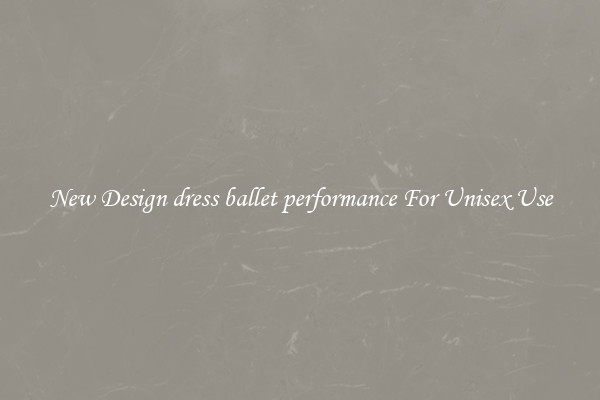New Design dress ballet performance For Unisex Use
New Design Dress Ballet Performance for Unisex Use: Breaking Gender Stereotypes in Dance

Traditionally, ballet has been a dance form that has been heavily associated with gender-specific costumes. Women are usually seen wearing tutus and elegant dresses, while men typically wear tights and jackets. However, there has been a recent push towards breaking these gender stereotypes in dance, and one significant step forward is the introduction of new design dress ballet performances for unisex use.
In the past, many talented male dancers were often discouraged from pursuing ballet due to the gender-specific costumes. The idea that ballet was only for women and that men were not supposed to wear feminine attire hindered the art form's growth and contributed to limiting opportunities for male artists in the field. Therefore, the introduction of new design dress ballet performances for unisex use is a welcome change that allows all dancers, regardless of their gender, to express themselves fully.
The new unisex costumes in ballet are designed with versatility and creativity in mind. They offer both male and female dancers the freedom to move and perform without restrictive gender norms. The designs often combine elements from both traditional male and female ballet costumes, creating a unique and inclusive aesthetic.
Not only do these new costumes challenge gender norms in ballet, but they also promote equality and diversity in the dance community. By removing the limitations and stereotypes associated with gender-specific attire, dancers can focus solely on their talent and artistry. They are no longer defined by outdated gender roles but are instead given the opportunity to showcase their skills and creativity without constraint.
Furthermore, the introduction of unisex costumes can also lead to more collaborative and innovative choreography. Breaking free from gender stereotypes opens up new possibilities for choreographers to create unique and refreshing performances that break the mold of traditional ballet. The inclusion of all genders in dance gives rise to a more dynamic and inclusive art form, pushing the boundaries of what ballet can be.
In conclusion, the introduction of new design dress ballet performances for unisex use is a significant step forward in breaking gender stereotypes in dance. By providing dancers the freedom to express themselves without limitations based on their gender, ballet becomes a more inclusive and diverse art form that fosters creativity and equality. This change not only benefits individual dancers but also enriches the entire ballet community, paving the way for a more progressive and inclusive future in the world of dance.

View details

View details

View details

View details







